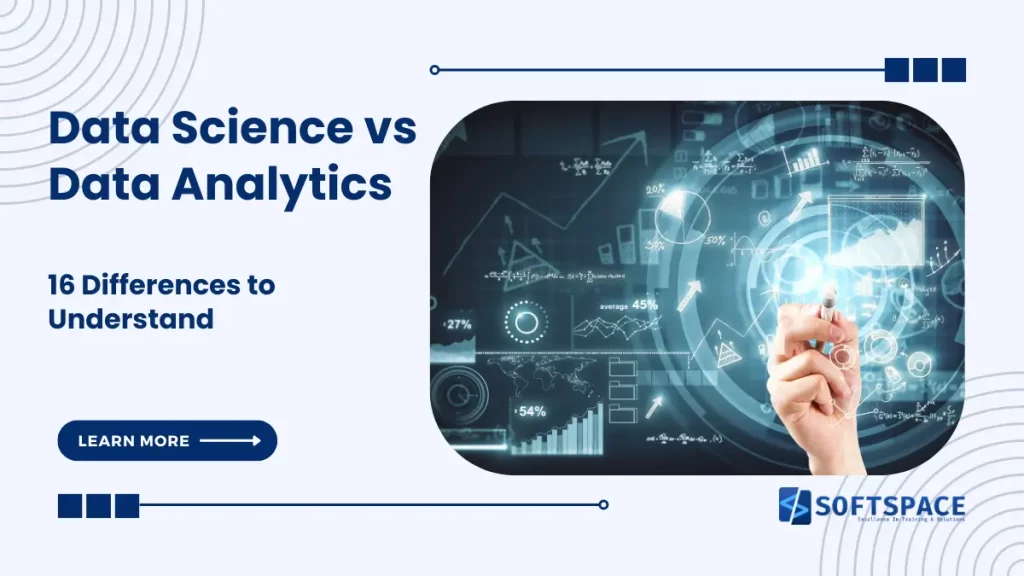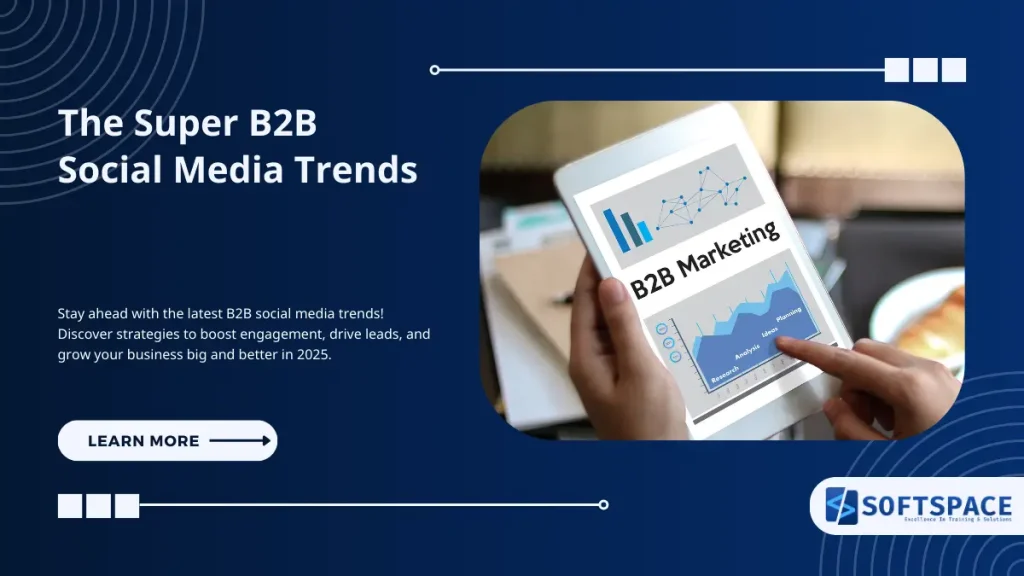In today’s data-driven world, information is king. But simply having data isn’t enough. You need the skills to unlock its secrets and transform it into actionable insights. That’s where data science and data analytics come in!
This article about data science vs data analytics is your one-stop shop for diving deep into these exciting fields. Whether you’re a curious beginner or a seasoned professional, we’ll explore the fascinating world of data together. We’ll uncover the differences between data science and data analytics, unveil the tools and techniques used by experts, and showcase real-world examples of how data is revolutionizing industries.
Table of Contents
Data Science vs Data Analytics? What’s the difference?
| Aspect | Data Science | Data Analytics |
|---|---|---|
| Focus | Extracting knowledge and insights from data | Analyzing data to answer specific business questions |
| Skills | Strong programming, statistics, and machine learning | Basic programming, data visualization, and communication |
| Data Type | Structured, unstructured, and semi-structured data | Primarily structured data |
| Methodology | Develops new models and algorithms | Uses existing tools and techniques |
| Outcome | Predictive and prescriptive models | Descriptive insights and reports |
Data Science vs. Data Analytics: Unveiling the Job Profiles
The world of data is booming, and with it comes the rising demand for experts who can wrangle and unlock its potential. But within this exciting field, two key roles emerge: Data Scientists and Data Analysts. While both deal with data, their approaches and goals differ. Let’s delve into the nitty-gritty of data science vs data analytics to understand which path might be the perfect fit for you.
Data Scientist: The Architect of Insights
Data Scientists are the rockstars of the data world. They possess a unique blend of computer science, statistics, and machine learning skills. Their primary focus is on extracting knowledge and hidden patterns from vast amounts of data, often including unstructured and semi-structured formats.
Here’s a glimpse into a Data Scientist’s toolkit:
- Programming Languages: Python, R, Scala
- Machine Learning: Algorithms, Model Building, Deep Learning
- Statistics: Advanced Statistical Analysis, Hypothesis Testing
- Big Data Technologies: Hadoop, Spark
Data Scientists are like architects, meticulously designing and developing new models and algorithms to solve complex problems. They play a crucial role in:
- Predictive Analytics: Forecasting future trends and customer behavior.
- Recommender Systems: Personalizing experiences on e-commerce platforms or streaming services.
- Natural Language Processing: Enabling machines to understand and respond to human language.
Data Analyst: The Translator of Data
Data Analysts are the bridge between raw data and actionable insights. They primarily work with structured data, using their skills to uncover trends, answer specific business questions, and communicate findings effectively.
Here are the key tools in a Data Analyst’s arsenal:
- SQL: A powerful language for querying and manipulating data in relational databases.
- Data Visualization Tools: Tableau, and Power BI, for creating clear and compelling visualizations.
- Communication Skills: The ability to translate complex data findings into easy-to-understand reports and presentations.
Data Analysts are the storytellers of data, transforming numbers into narratives that inform business decisions. Their duties may include:
- Market Research: Analyzing customer data to understand preferences and buying habits.
- Financial Analysis: Identifying financial trends and forecasting future performance.
- Marketing Analytics: Measuring the effectiveness of marketing campaigns and optimizing strategies.
Choosing Your Path: Data Science vs Data Analytics
So, which path is right for you? Consider your interests and skillset:
- Thrive on building complex models and solving challenging problems? Data Science might be your calling.
- Enjoy clear communication and translating data into actionable insights. Data Analyst could be a perfect fit.
Remember, there’s also a natural progression between these roles. Many Data Scientists begin their careers as Data Analysts, honing their foundational skills before diving deeper into advanced techniques.
No matter which path you choose, the world of data offers endless possibilities for exploration, innovation, and making a real impact with the power of information.
Defining Data Science
At its core, data science is a multidisciplinary field that involves extracting insights and knowledge from large, complex datasets. Data scientists are highly skilled professionals who possess a deep understanding of statistical analysis, programming, and machine learning algorithms. They are responsible for designing and implementing models that can uncover valuable patterns and trends hidden within vast amounts of data.
Data science is not just about analyzing numbers and statistics. It also involves understanding the context and domain knowledge of the data being analyzed. Data scientists need to have a strong grasp of the industry they are working in, as well as the specific goals and objectives of the project they are working on. This allows them to ask the right questions and make informed decisions when analyzing the data.
Furthermore, data science is not a one-size-fits-all approach. Different projects may require different techniques and methodologies. Data scientists need to be adaptable and flexible in their approach, constantly learning and keeping up with the latest advancements in the field. They need to be able to think critically and creatively to come up with innovative solutions to complex problems.
The Role of a Data Scientist
A data scientist’s primary role is to develop and refine algorithms and models that can process large volumes of data efficiently. They are tasked with identifying the most appropriate statistical techniques and machine learning algorithms to analyze data and generate actionable insights. Data scientists also play a crucial role in designing and implementing predictive models that can forecast future trends and behaviours based on historical data.
However, the role of a data scientist goes beyond just analyzing data. They also need to be effective communicators, capable of explaining complex concepts and findings to both technical and non-technical stakeholders. Data scientists often work closely with business leaders and decision-makers, providing them with the information they need to make data-driven decisions.
Additionally, data scientists are responsible for ensuring the quality and integrity of the data they work with. They need to have a keen eye for detail and be able to identify and address any issues or inconsistencies in the data. This involves cleaning and preprocessing the data, as well as performing rigorous validation and testing to ensure the accuracy of the results.
Key Tools and Techniques in Data Science
To carry out their work effectively, data scientists rely on a wide range of tools and techniques. They utilize programming languages like Python and R to clean, manipulate, and analyze data. These languages provide powerful libraries and frameworks that simplify the data science workflow, allowing data scientists to focus on the analysis rather than the implementation details.
In addition to programming languages, data scientists also leverage powerful frameworks such as TensorFlow and PyTorch for building and training deep learning models. These frameworks provide a high-level interface for developing complex neural networks, making it easier for data scientists to experiment with different architectures and algorithms.
Furthermore, data scientists have expertise in working with big data technologies like Hadoop and Spark to handle large-scale datasets. These technologies allow for distributed processing and storage of data, enabling data scientists to work with massive amounts of information efficiently. They also use data visualization tools such as Tableau and Power BI to create visually appealing and informative charts and graphs that help communicate their findings effectively.
Overall, data science is a dynamic and rapidly evolving field that requires a combination of technical skills, domain knowledge, and creativity. Data scientists play a crucial role in extracting meaningful insights from data and driving data-driven decision-making in various industries and sectors.
Understanding Data Analytics
Data analytics is a discipline focused on the exploration, interpretation, and visualization of data to uncover meaningful insights. It involves the use of various tools and techniques to collect, organize, and analyze data from different sources. Data analysts play a crucial role in extracting valuable information from datasets and transforming it into actionable recommendations for businesses and organizations.
When it comes to data analytics, there are several key aspects to consider. One of the main responsibilities of a data analyst is to collect and organize data from various sources. This involves gathering data from databases, spreadsheets, and other relevant sources. Once the data is collected, data analysts employ different statistical techniques to identify patterns, trends, and correlations within the data.
Data analysts also utilize visualization tools to create reports and dashboards that present data in a comprehensible and meaningful way. These tools, such as Tableau or Power BI, allow analysts to create interactive and visually appealing visualizations that help stakeholders understand the insights derived from the data. By using these visualizations, data analysts can effectively communicate their findings to stakeholders and provide them with data-driven solutions.
The Role of a Data Analyst
A data analyst’s role is multifaceted and requires a combination of technical skills, analytical thinking, and effective communication. Data analysts are responsible for not only collecting and organizing data but also for analyzing and interpreting it. They work closely with stakeholders to understand their information needs and provide them with data-driven solutions.
One of the key skills that data analysts possess is the ability to employ statistical software like SAS or SPSS. These tools allow analysts to perform complex data analysis and make accurate predictions based on the data. By utilizing statistical software, data analysts can uncover hidden patterns and trends that may not be apparent at first glance.
In addition to statistical software, data analysts often work with SQL to extract and manipulate data from databases. SQL, or Structured Query Language, is a programming language used to manage and manipulate relational databases. By using SQL, data analysts can retrieve specific data subsets, perform calculations, and generate reports based on the data.
Key Tools and Techniques in Data Analytics
Data analysts utilize a variety of tools and techniques to carry out their work effectively. These tools enable them to collect, analyze, and visualize data in a way that is meaningful and actionable. In addition to statistical software and SQL, data analysts also use data visualization tools to create interactive and visually appealing visualizations.
One popular data visualization tool used by data analysts is Tableau. Tableau allows analysts to create interactive dashboards and reports that can be easily shared with stakeholders. The tool provides a wide range of visualization options, including charts, graphs, and maps, which can be customized to suit the needs of the audience.
Another widely used data visualization tool is Power BI. Power BI is a business analytics tool that provides interactive visualizations and business intelligence capabilities. With Power BI, data analysts can create visually stunning reports and dashboards that help stakeholders understand complex data and make informed decisions.
Overall, data analytics is a dynamic field that requires a combination of technical skills, analytical thinking, and effective communication. Data analysts play a crucial role in extracting valuable insights from data and providing actionable recommendations to businesses and organizations. By utilizing various tools and techniques, data analysts are able to make sense of complex datasets and help drive data-driven decision-making.
Comparison: Data Science vs Data Analytics
While data science and data analytics share some similarities, they also have significant differences in terms of scope and skill sets required.
Differences in Scope and Approach
Data science typically encompasses a broader scope, involving the entire data lifecycle from collection to analysis to modelling. Data scientists are involved in all steps of the process, including data cleaning, feature engineering, and model evaluation. Data analytics, on the other hand, focuses primarily on the analysis and interpretation of data to answer specific business questions. Data analysts often work with pre-processed and structured data, extracting insights to drive decision-making.
Skill Sets Required for Each Field
Both data science and data analytics involve working with data, but the specific skill sets required for each role differ. Here’s a breakdown to help you understand what’s needed for each path:
Data Science: The All-Rounder
Data scientists are like data wranglers and magicians combined. They need a robust skill set that blends technical expertise with analytical prowess. Here are the key areas:
- Programming Languages: Python (essential!), R, Scala (for big data)
- Statistics & Mathematics: Strong foundation in statistics, probability, linear algebra, and calculus
- Machine Learning: In-depth understanding of machine learning algorithms and their applications (e.g., regression, classification)
- Big Data Technologies: Familiarity with tools like Hadoop, Spark, for handling massive datasets
- Cloud Computing: Knowledge of cloud platforms like AWS, Azure, or GCP for data storage and processing
Data Analytics: The Translator of Data
Data analysts are the storytellers of data. They excel at transforming raw data into clear and actionable insights. Here’s what’s in their toolkit:
- SQL: A must-have skill for querying and manipulating data in relational databases.
- Data Visualization: Expertise in tools like Tableau, Power BI to create compelling data visualizations.
- Data Wrangling & Cleaning: Ability to clean and organize messy data for analysis.
- Basic Statistics: Understanding of statistical concepts like hypothesis testing and descriptive statistics.
- Communication Skills: The ability to translate complex data findings into easy-to-understand reports and presentations.
Beyond the Core Skills:
While these are the core skill sets, both data scientists and data analysts can benefit from:
- Business Acumen: Understanding the business domain you’re working in is crucial for providing relevant insights.
- Problem-Solving Skills: The ability to approach challenges creatively and identify the best way to analyze data.
- Curiosity & Passion for Data: A genuine interest in data and a drive to uncover its hidden potential is essential for success.
What to choose? Data Science vs Data Analytics
If you’re considering a career in either data science or data analytics, it’s essential to understand the career prospects and opportunities available in each field.
Career Prospects in Data Science
Data science has witnessed significant growth in recent years, with a high demand for skilled professionals. Industries across sectors, such as healthcare, finance, and technology, are actively seeking data scientists to leverage data for strategic decision-making. Job titles in data science include data scientist, machine learning engineer, and data engineer.
Career Prospects & Salary: Data Science vs Data Analytics
In India, data science roles typically offer higher salaries compared to data analytics. Here’s a breakdown of the average salary ranges:
- Data Scientist: ₹8 lakh to ₹20 lakh per annum (approximately $10,000 to $25,000 USD based on current exchange rates).
- Data Analyst: ₹4 lakh to ₹10 lakh per annum (approximately $5,000 to $12,500 USD).
Keep in mind, that these are averages and several factors can influence your actual salary in India:
- Location: Metropolitan cities like Mumbai, Delhi, and Bangalore generally offer higher salaries for data professionals.
- Experience: Salaries increase significantly with experience. Someone with 5+ years of experience can expect a higher salary than a fresher.
- Industry: Certain industries, like information technology (IT) and e-commerce, tend to pay a premium for data expertise.
- Skillset: Having in-demand skills like machine learning and expertise in specific programming languages like Python can significantly boost your earning potential.
Remember, salary is just one piece of the puzzle. Consider these factors when choosing between data science and data analytics:
- Interests: Do you enjoy tackling complex problems and building new models? Data science might be a good fit.
- Skills: Are you strong in communication and translating data into clear insights? Data analytics could be your calling.
Many data scientists start their careers in data analytics, building a strong foundation before specializing. Whichever path you choose, the data field in India is flourishing, offering exciting opportunities to make a real impact with your skills.
The Interplay: Data Science vs Data Analytics
Although data science and data analytics are distinct fields, they often coexist and complement each other in practice.
How does Data Science Supports Data Analytics?
Data science provides the foundational techniques and models that data analysts rely on to extract insights from data. The algorithms developed by data scientists enable analysts to perform complex analysis tasks quickly and accurately. Data scientists also assist data analysts in selecting appropriate statistical techniques and helping interpret the results.
How does Data Analytics complement Data Science?
Data analytics provides the necessary context and business understanding for data scientists’ work. Data analysts play a crucial role in defining business requirements, identifying the right metrics to measure success, and translating data-driven insights into actionable recommendations. They collaborate with data scientists to refine models and ensure that they align with the organization’s objectives.
Conclusion
In conclusion, while data science and data analytics share a foundation in data analysis, they differ in terms of approaches, scope, and skill requirements. Understanding these differences can help aspiring professionals choose the right career path and organizations build well-rounded data teams. Both fields are essential for leveraging the power of data-driven decision-making and unlocking valuable insights in today’s data-driven world.

13+ Yrs Experienced Career Counsellor & Skill Development Trainer | Educator | Digital & Content Strategist. Helping freshers and graduates make sound career choices through practical consultation. Guest faculty and Digital Marketing trainer working on building a skill development brand in Softspace Solutions. A passionate writer in core technical topics related to career growth.




